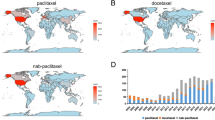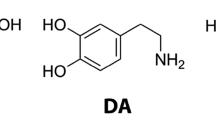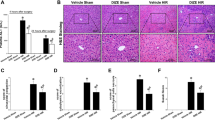Abstract
DIMETHYLNITROSAMINE1 and some other dialkylnitrosamines2,3 cause centrilobular necrosis in rats. Schoental and Rose4 suggested independently that centrilobular necrosis was caused by diazo-alkanes formed by the metabolic oxidation of the nitrosamines in the liver in vivo5,6. The sequence of reactions is presumed to be: 
Similar content being viewed by others
Article PDF
References
Barnes, J. M., and Magee, P. N., Brit. J. Indust. Med., 11, 167 (1954).
Schmähl, D., Preussmann, R., and Hamperl, H., Naturwiss., 47, 89 (1960).
Magee, P. N. (personal communication).
Rose, R. F., The Evaluation of Drug Toxicity, 116 (Churchill, London, 1958).
Dutton, A. H., and Heath, D. F., Nature, 178, 644 (1956).
Magee, P. N., Biochem. J., 64, 676 (1956).
Author information
Authors and Affiliations
Rights and permissions
About this article
Cite this article
HEATH, D. Mechanism of the Hepatoxic Action of Dialkylnitrosamines. Nature 192, 170 (1961). https://doi.org/10.1038/192170a0
Issue date:
DOI: https://doi.org/10.1038/192170a0
This article is cited by
-
Charakterisierung der durch Dimethylnitrosamin in vivo alkylierten RNS-Fraktionen der Leber
Zeitschrift f�r Krebsforschung und Klinische Onkologie (1971)
-
Mechanism of Alkylation of Nucleic Acids by Nitrosodimethylamine
Nature (1968)
-
�ber Photolyse bei Nitrosaminen
Die Naturwissenschaften (1967)
-
Organotrope carcinogene Wirkungen bei 65 verschiedenen N-Nitroso-Verbindungen an BD-Ratten
Zeitschrift f�r Krebsforschung (1967)
-
Decomposition and Carcinogenic Activity of Azoxyglycosides
Nature (1965)



